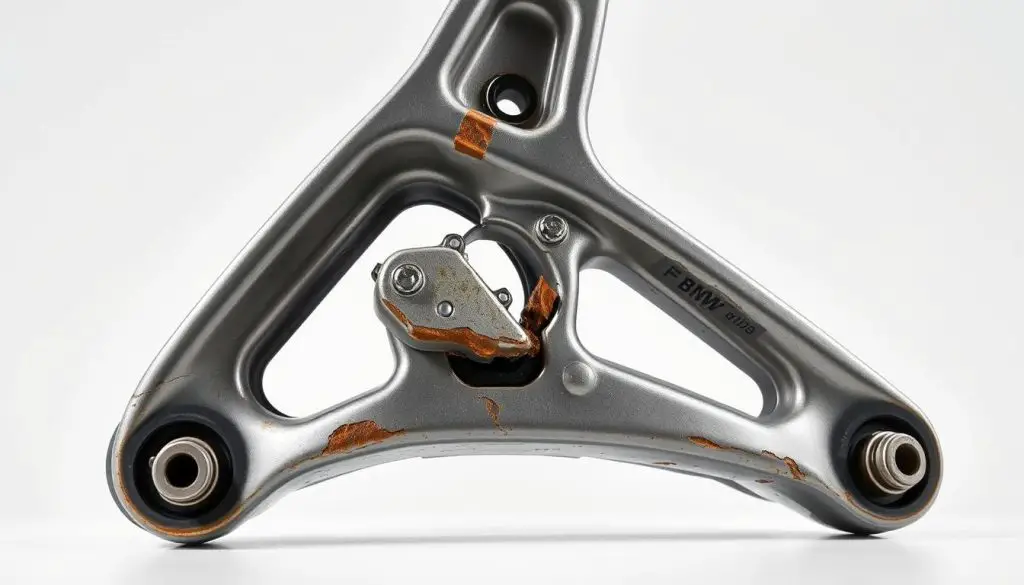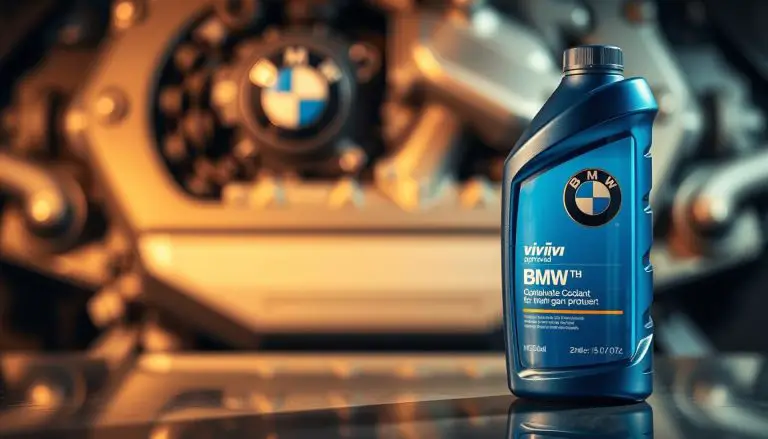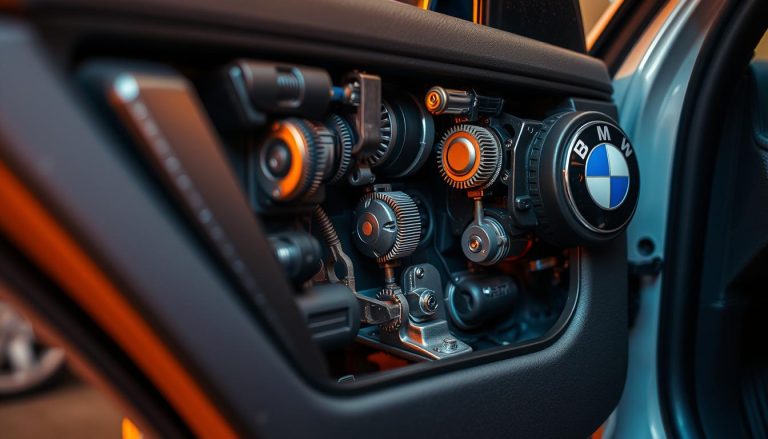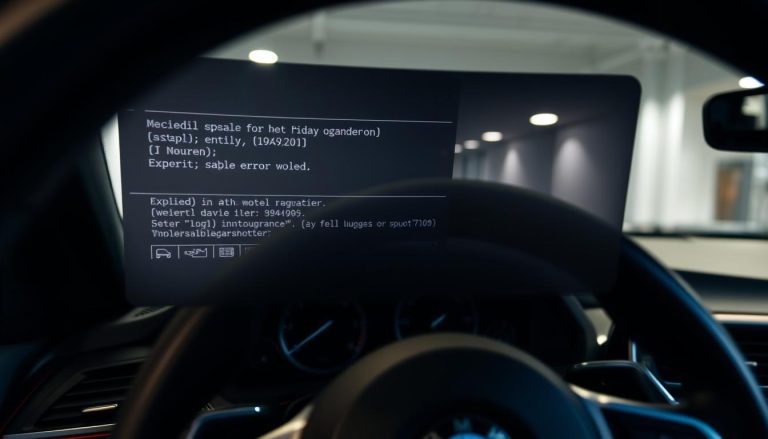Replacing a BMW control arm is a crucial maintenance task that ensures the vehicle’s stability and handling. For BMW owners, understanding the process and cost involved is essential for a successful DIY replacement or repair.
A DIY BMW control arm replacement requires careful consideration of several factors, including the right tools and a step-by-step guide. This article provides a comprehensive BMW repair guide, walking you through the replacement process, associated costs, and tips for a successful repair.
Key Takeaways
- Understanding the importance of replacing a BMW control arm
- Step-by-step guide for DIY BMW control arm replacement
- Factors affecting the cost of BMW control arm replacement
- Tips for a successful BMW control arm replacement
- Common mistakes to avoid during the replacement process
Understanding BMW Control Arms
In BMW vehicles, control arms play a significant role in maintaining stability and control. They are a crucial part of the suspension system, connecting the frame to the steering knuckle or wheel hub.
What Is a Control Arm and Its Function
A control arm, also known as an A-arm or lateral link, is a vital component that facilitates smooth movement of the suspension. Its primary function is to:
- Maintain proper wheel alignment
- Provide stability during steering and braking
- Absorb road shocks and vibrations
The control arm’s design allows for a range of motion, enabling the suspension to compress and rebound.
Types of Control Arms in Different BMW Series
BMW uses various types of control arms across its model lineup. The most common types include:
- Upper Control Arms: Typically found in vehicles with double-wishbone suspension
- Lower Control Arms: More common in modern BMW models, often used in conjunction with MacPherson struts
- Adjustable Control Arms: Used in performance-oriented models to allow for camber adjustments
Different BMW series, such as the 3, 5, and 7 Series, may utilize distinct control arm designs based on their suspension configuration.
Signs of a Failing BMW Control Arm
The control arm is a critical component of your BMW’s suspension system, and its failure can lead to noticeable issues. Recognizing the signs of a failing control arm early on can help prevent further damage to your vehicle’s suspension and steering system.
Unusual Noises and Vibrations
One of the primary indicators of a failing control arm is the presence of unusual noises and vibrations. As the control arm bushings wear out, they can cause clunking or rattling sounds, especially when driving over bumps or during turns. Additionally, vibrations felt through the steering wheel or the vehicle’s floor can signal that the control arm is no longer functioning properly.
Steering and Handling Issues
A failing control arm can also lead to steering and handling problems. If the control arm is worn or damaged, it can cause the vehicle’s alignment to shift, resulting in uneven tire wear and potentially pulling the vehicle to one side. Drivers may notice that their BMW is harder to steer or that it feels less responsive to steering input.
Visual Inspection Indicators
During a visual inspection, several signs can indicate a failing control arm. Look for worn or damaged bushings, excessive play in the control arm joints, or any signs of rust or corrosion on the control arm itself. A thorough inspection can help identify issues before they become major problems.
| Symptom | Description |
|---|---|
| Unusual Noises | Clunking or rattling sounds from the suspension area |
| Vibrations | Vibrations felt through the steering wheel or vehicle floor |
| Steering Issues | Pulling to one side, uneven tire wear, or hard steering |
| Visual Signs | Worn bushings, excessive play in joints, rust, or corrosion |
BMW Control Arm Replacement Cost
Understanding the cost implications of BMW control arm replacement is crucial for making informed decisions. The cost of replacing a control arm in a BMW can vary widely, influenced by factors such as the vehicle’s model, the type of parts used (OEM vs. aftermarket), and labor costs.
Dealer vs. Independent Shop Pricing
When it comes to replacing a BMW control arm, one of the significant factors affecting the overall cost is the choice between a dealership and an independent repair shop. Dealerships typically charge more for labor, which can significantly increase the total cost. In contrast, independent shops may offer more competitive pricing without compromising on quality.
Comparison:
| Service Provider | Labor Cost | Total Replacement Cost |
|---|---|---|
| Dealership | $200-$500 | $800-$1,500 |
| Independent Shop | $100-$300 | $600-$1,200 |
OEM vs. Aftermarket Parts Comparison
The choice between OEM (Original Equipment Manufacturer) and aftermarket parts is another critical factor in determining the cost of control arm replacement. OEM parts are made by the same manufacturer as the original parts and are generally more expensive. Aftermarket parts, on the other hand, are produced by third-party companies and can offer significant savings.
OEM vs. Aftermarket:
| Part Type | Cost | Quality |
|---|---|---|
| OEM | $200-$500 | High |
| Aftermarket | $100-$300 | Variable |
Cost Breakdown by BMW Models
The cost of replacing a control arm can also vary significantly across different BMW models. Generally, larger and more complex vehicles tend to have higher replacement costs.
Cost by Model:
| BMW Model | OEM Part Cost | Aftermarket Part Cost | Total Replacement Cost |
|---|---|---|---|
| 3 Series | $250 | $150 | $600-$1,000 |
| 5 Series | $300 | $200 | $700-$1,200 |
| 7 Series | $400 | $250 | $900-$1,500 |
| X5 | $350 | $220 | $800-$1,300 |
When to Replace vs. When to Repair Control Arms
The decision to repair or replace a control arm in a BMW involves assessing the extent of the damage and considering the vehicle’s overall condition. This evaluation process is crucial for making an informed decision that balances cost, safety, and performance.
Evaluating Damage Severity
Assessing the severity of control arm damage is the first step in deciding between repair and replacement. Minor issues such as worn bushings might be repairable, but significant damage to the arm itself or its ball joint often necessitates replacement. Inspecting the control arm for signs of excessive wear, rust, or physical damage is essential.
Considering Vehicle Age and Mileage
The age and mileage of your BMW are critical factors in this decision. For newer vehicles with low mileage, repairing the control arm might be the more economical choice. However, for older vehicles or those with high mileage, replacement is often more advisable to ensure reliability and safety.
Cost-Benefit Analysis
Conducting a cost-benefit analysis is vital. Compare the cost of repairing the control arm with the cost of a new one, considering both the immediate expenses and long-term benefits. A comparison table can help clarify the costs involved.
| Action | Immediate Cost | Long-term Benefits |
|---|---|---|
| Repair | $200-$500 | Short-term fix, potential for future issues |
| Replace | $500-$1000 | Long-term reliability, enhanced safety |

Ultimately, the decision to repair or replace a BMW control arm should be based on a thorough assessment of the damage, the vehicle’s condition, and a careful cost-benefit analysis. By considering these factors, BMW owners can make an informed decision that best suits their needs.
Tools and Materials Needed for DIY Replacement
Before starting your DIY BMW control arm replacement, it’s crucial to have the necessary tools and supplies. This preparation will ensure a smooth and efficient process.
Essential Tools List
The following tools are essential for a successful DIY replacement:
- Socket set including various sizes for bolts and nuts
- Torque wrench for precise tightening
- Ball joint separator for safe removal
- Pry bar for gently prying components
- Safety glasses and gloves for personal protection
Recommended Parts and Supplies
For a DIY BMW control arm replacement, you’ll need:
- OEM or high-quality aftermarket control arm designed for your BMW model
- New bushings if the existing ones are worn
- Ball joint if it’s damaged or worn out
- Anti-seize lubricant for easy installation
Optional Specialized BMW Tools
While not mandatory, the following specialized tools can simplify the process:
- BMW-specific control arm removal tool
- Compression tool for coil springs
Having the right tools and materials is crucial for a successful DIY BMW control arm replacement. Ensure you have everything needed before starting the project.
Preparation Before Starting the Replacement
Proper preparation is vital before diving into the BMW control arm replacement process. Ensuring your safety and the success of the replacement requires careful planning and execution.
Safety Precautions
Before starting, make sure you are wearing appropriate safety gear, including gloves and safety glasses. Ensure the workspace is clear of clutter and well-ventilated to prevent accidents and injuries.
Additionally, never work under a vehicle supported solely by a jack. Always use jack stands for added safety and support.
Vehicle Positioning and Support
Position your BMW on a level surface and apply the parking brake. Use a hydraulic jack to lift the vehicle, and then support it with jack stands to ensure stability.
Accessing the Control Arm Area
To access the control arm, you may need to remove other components such as the wheel, splash guard, or other obstructing parts. Consult your BMW’s repair manual for specific instructions on how to access the control arm area for your particular model.
Having the right tools and a clear workspace will make the replacement process smoother and more efficient.
Step-by-Step BMW Control Arm Removal Process
Understanding how to remove the control arm on your BMW is crucial for maintaining your vehicle’s handling and safety. The control arm is a vital component of your BMW’s suspension system, and removing it requires careful attention to detail and the right tools.
Removing the Wheel and Accessing Components
The first step in removing the control arm is to take off the wheel. Use a lug wrench to loosen the lug nuts before raising the vehicle with a jack. Once the vehicle is elevated and supported by jack stands, you can completely remove the lug nuts and take off the wheel. This gives you access to the control arm and its associated components.
Important: Make sure the vehicle is securely supported by jack stands to avoid any accidents.
Disconnecting the Ball Joint
The next step involves disconnecting the ball joint from the steering knuckle. Use a ball joint separator tool to safely disconnect the ball joint without damaging it. This step is crucial as it allows you to access the control arm more easily.
Tip: Be gentle when using the ball joint separator to avoid damaging the surrounding components.
Removing the Control Arm Bushings
Control arm bushings are critical for the smooth operation of the suspension. To remove them, you’ll need to use a bushing removal tool. This tool helps to press out the old bushings so that you can install new ones.
- Identify the type of bushing used in your BMW model.
- Use the appropriate bushing removal tool.
- Carefully press out the old bushing.
Complete Removal of the Old Control Arm
After disconnecting the ball joint and removing the bushings, you can now completely remove the old control arm. This may require some maneuvering, depending on the BMW model and the space available.
Note: Take your time to ensure that all connections are properly disconnected before attempting to remove the control arm.
Installing the New Control Arm
With the old control arm removed, it’s time to install a new one, following a precise process to ensure optimal performance. Installing a new BMW control arm is a critical step in restoring your vehicle’s suspension system to its original condition.

Positioning and Initial Attachment
The first step in installing the new control arm is to position it correctly in its mounting location. Ensure that it is aligned with the mounting brackets and that all bolts and bushings are properly seated before tightening. The new control arm should fit snugly into place, with no signs of misalignment.
Initial attachment involves loosely securing the control arm to the suspension using the appropriate bolts. It’s crucial not to fully tighten these bolts at this stage, as adjustments may be needed during the installation of other components.
Securing the Ball Joint
The ball joint is a critical component that connects the control arm to the steering knuckle. To secure it, start by ensuring the ball joint is properly seated in the steering knuckle. Then, use the appropriate tool to tighten the ball joint nut to the specified torque.
It’s essential to follow the manufacturer’s torque specifications to avoid damaging the ball joint or stripping the threads. A torque wrench is indispensable for this step, ensuring that the ball joint is securely fastened.
Installing New Bushings
New bushings are crucial for the smooth operation of the control arm. To install them, first ensure that the control arm is in its correct position. Then, press the new bushings into place using the appropriate tool, making sure they are fully seated and not damaged during installation.
Properly installed bushings will help reduce vibration and noise, improving the overall ride quality of your BMW.
Final Tightening and Torque Specifications
Once all components are in place, it’s time for the final tightening. Use a torque wrench to tighten all bolts to the manufacturer’s specified torque. This includes the control arm mounting bolts and the ball joint nut.
Refer to your BMW’s repair manual for the exact torque specifications, as these can vary between models. Ensuring that all bolts are tightened to the correct torque is vital for the safe operation of your vehicle.
Conclusion
Replacing a BMW control arm is a crucial maintenance task that ensures proper vehicle alignment and prevents further damage to the suspension system. The average cost for a BMW 328i Control Arm Assembly Replacement is $203. To recap, signs of a failing control arm include wheel alignment difficulties, vehicle pulling to one side, clunking or squeaking noises, and uneven braking performance.
When undertaking a DIY control arm replacement, it’s essential to replace control arms in pairs if the failure is due to worn bushings or a ball joint. A thorough inspection of other suspension components is also recommended during control arm replacement. For a successful DIY replacement, refer to the step-by-step guide provided earlier in this article.
For more detailed estimates and to schedule a service, visit YourMechanic. By following these DIY control arm replacement tips and summary, you’ll be able to maintain your BMW’s performance and safety on the road.
FAQ
What are the signs that my BMW control arm needs replacement?
Common signs include unusual noises and vibrations, steering and handling issues, and visual inspection indicators such as worn-out bushings or damage to the control arm itself.
How much does it cost to replace a BMW control arm?
The cost varies depending on the BMW model, with prices ranging differently for 3, 5, 7 Series, and X Models. Additionally, costs differ between dealerships and independent shops, as well as between OEM and aftermarket parts.
Can I replace the control arm on my BMW myself?
Yes, with the right tools and materials, and by following a step-by-step guide, you can replace the control arm on your BMW yourself. It’s essential to follow safety precautions and properly position and support your vehicle.
What tools are needed for a DIY BMW control arm replacement?
Essential tools include a wheel chock, jack, jack stands, socket set, and specialized tools like a ball joint separator. Recommended parts and supplies include the new control arm, bushings, and any necessary fasteners.
How do I know whether to repair or replace my BMW’s control arm?
The decision depends on evaluating the damage severity, considering the vehicle’s age and mileage, and conducting a cost-benefit analysis. If the damage is severe or the vehicle is older, replacement is often the more cost-effective option.
What is the difference between OEM and aftermarket control arm parts?
OEM parts are manufactured by the original equipment manufacturer, ensuring a precise fit and quality. Aftermarket parts are made by third-party suppliers and can vary in quality and fit, but are often more affordable.
Can a faulty control arm cause other problems with my BMW?
Yes, a faulty control arm can lead to uneven tire wear, steering and handling issues, and potentially cause other suspension components to fail prematurely.
How long does it take to replace a BMW control arm?
The time required varies depending on your level of experience and the specific BMW model. Generally, it can take several hours to complete the replacement.


